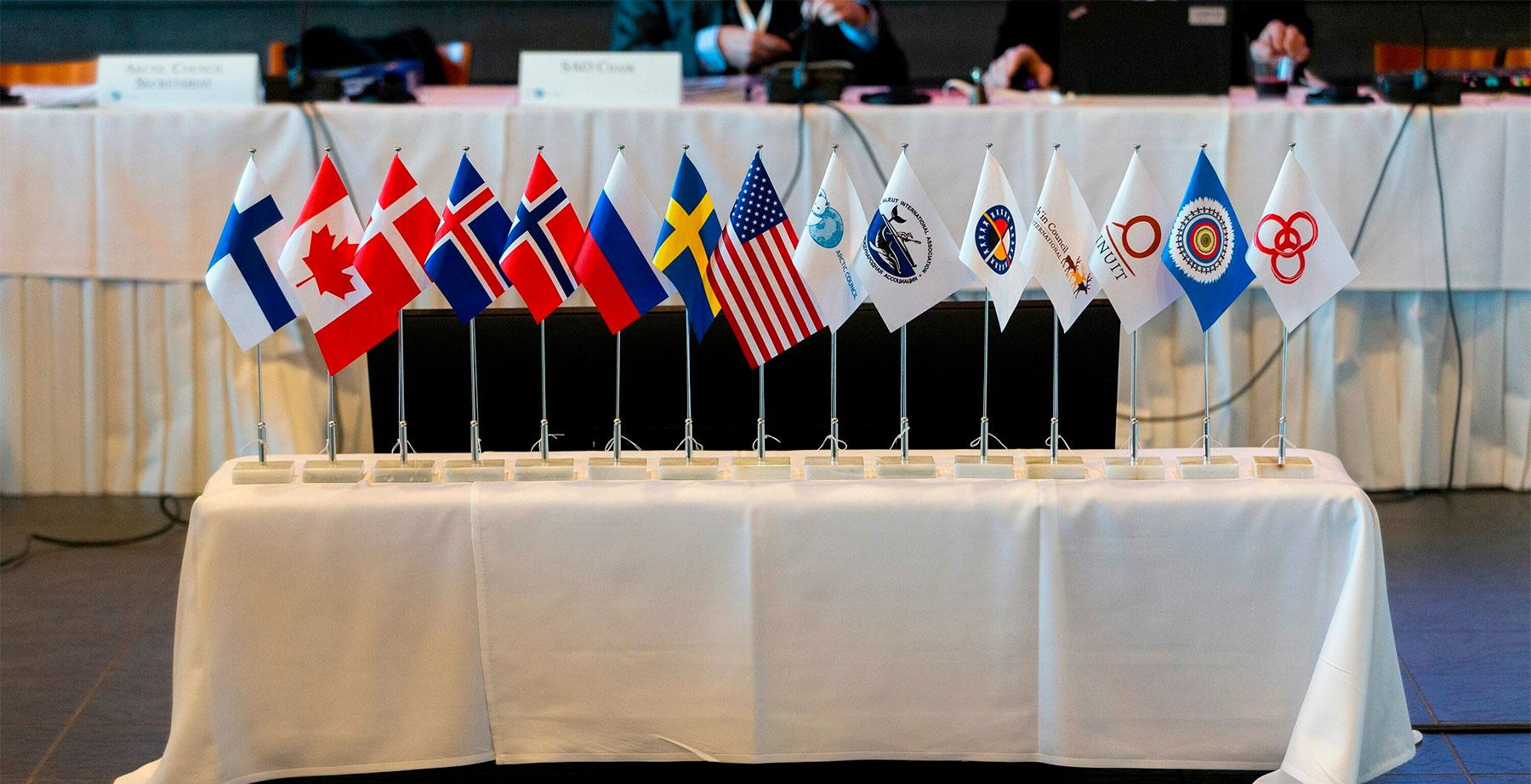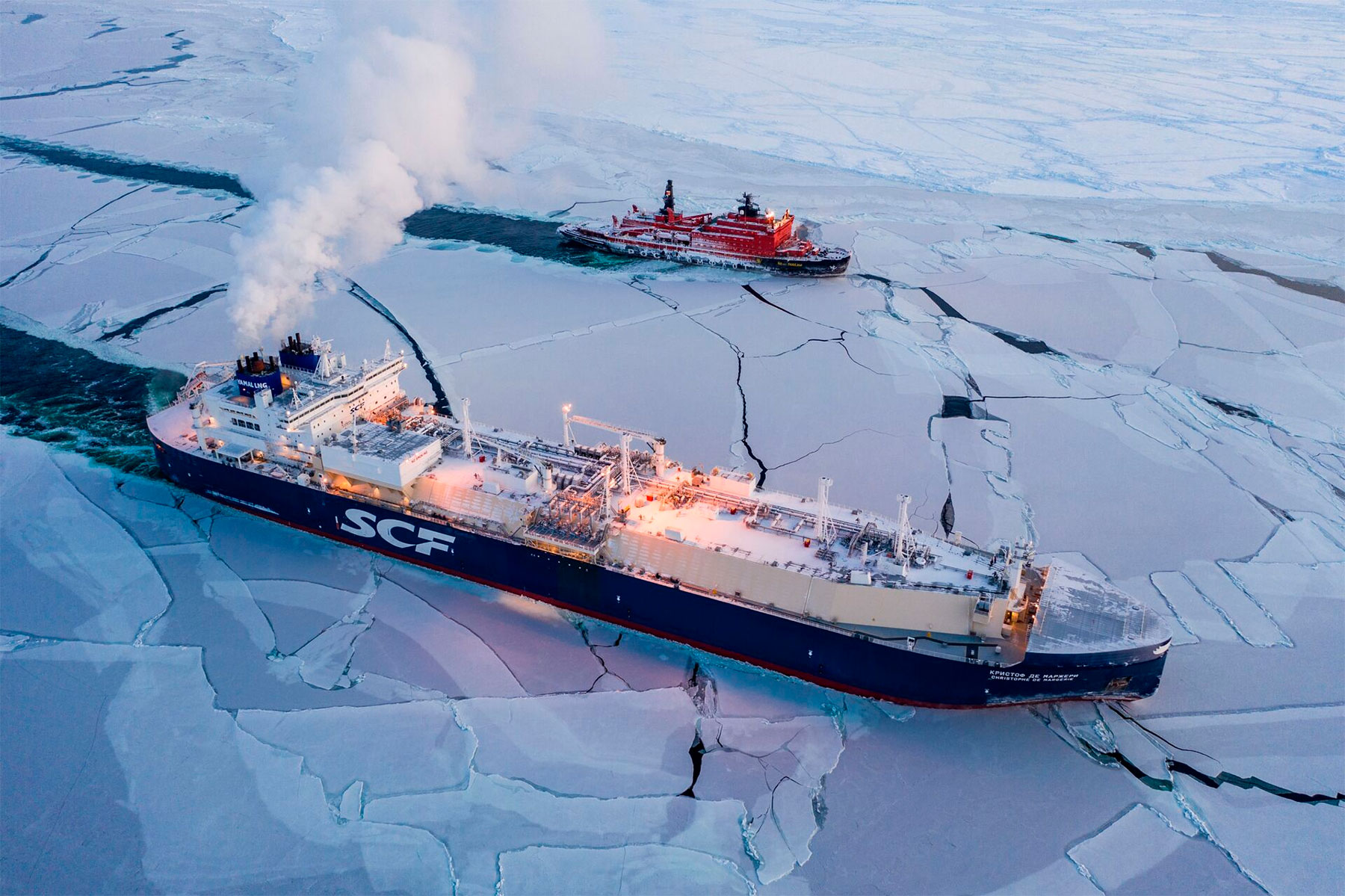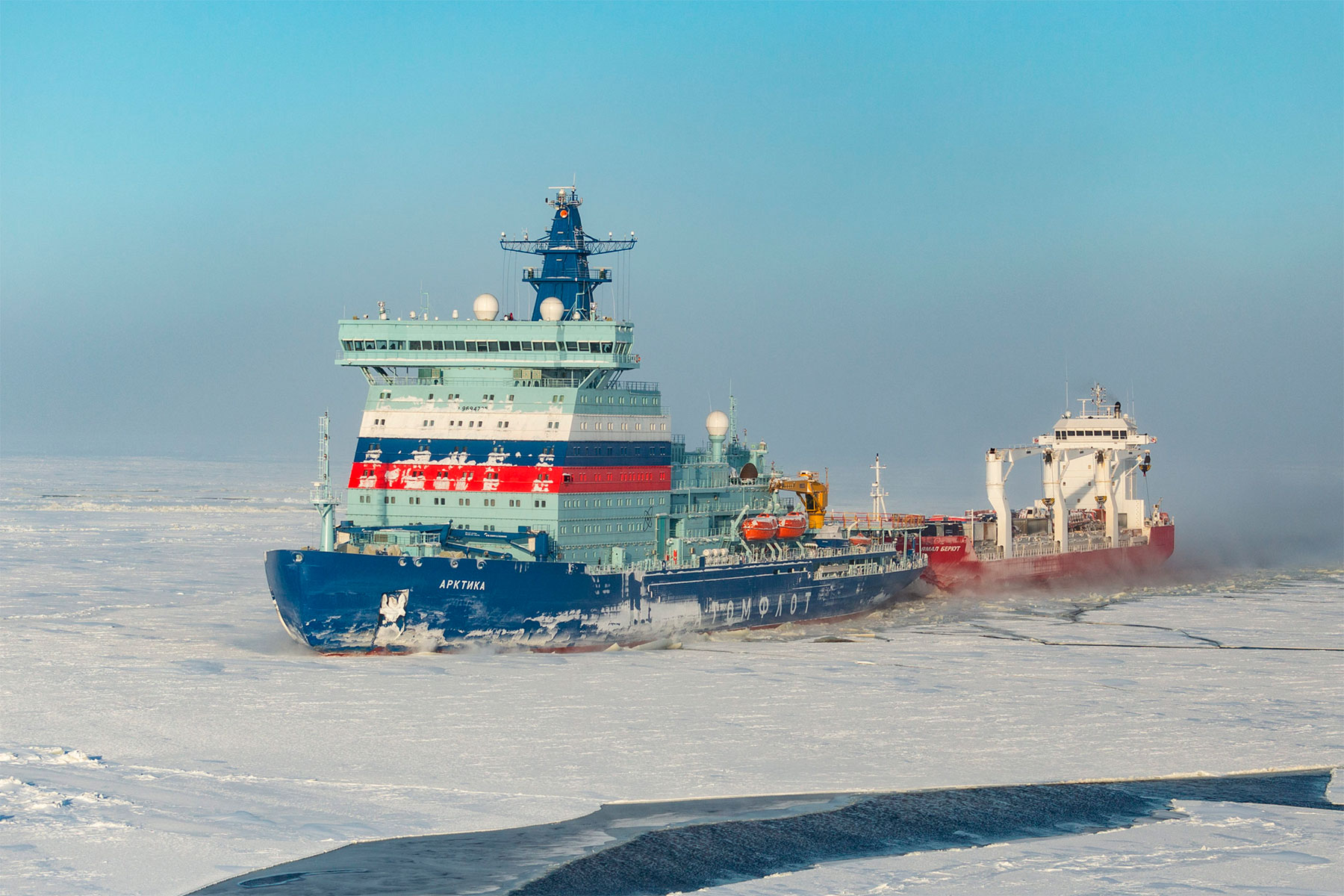The concept of ‘Three Poles of the Cold’ (or simply the Three Poles) has not yet received an unambiguous interpretation among the students of political science. For some, mainly climatologists and glaciologists from the Greater Himalayan region, this is all about only one Pole of the Cold, i.e. the Himalayas. These scientists are mainly interested in the factors that cause the melting of glaciers in this mountain range, as well as in the climatic and socio-economic consequences that the process has for Asian nations. For others, it is important to establish the relationship between the natural and climatic processes occurring in the Arctic, the Antarctic and the Himalayas to arrive at a global climate model. For international diplomats and political scientists, it is more interesting to see how the positive experience of scientific and environmental co-operation gained in the Arctic and Antarctic can be applied to the Himalayas and Tibet in solving the existing bi- and multilateral problems in this region.
In recent years, especially with the growing tensions at the two poles—the North Pole and the Himalayan Pole—the Three Poles concept has been gaining popularity in India, China, Russia, and in some Northern European countries. Its purpose is not so much to study the natural and climatic processes in these regions as to encourage cooperation between the states involved in Arctic, Antarctic, and Himalayan-Tibetan issues.
The Russian interpretation of the concept stakes on the possibility of using the experience of Arctic and Antarctic cooperation to improve relations between India and China, including the settlement of territorial disputes between the two countries in Tibet as one of the most important tasks. Both are important for Russia as strategic partners and “drivers” of BRICS, a very significant integration project for Moscow. Russia is not happy about the
Russia believes that the Three Poles project could help launch informal dialogue between India and China—first, on scientific issues related to all three regions, and this could then lead to more serious agreements between them, including the resolution of border conflicts.
This concept also receives some support at the Russian Foreign Ministry.
Given that the “old” BRICS members—Brazil and South Africa—have a rich experience in Antarctic research and are increasingly interested in the Arctic, while the “newcomers” to the integration project include the UAE, Egypt, Saudi Arabia and Iran, willing to participate in studying the Third Pole (some of them being also keen on the Arctic), the Three Poles project has real prospects of becoming a common cause for this group, some sort of “integrator” and “driver” of BRICS for the foreseeable future. In the year of Russia’s chairmanship in BRICS, it is time to take the initiative into our own hands.
The concept of ‘Three Poles of the Cold’ (or simply the Three Poles) has not yet received an unambiguous interpretation among the students of political science. For some, mainly climatologists and glaciologists [1] from the Greater Himalayan region, this is all about only one Pole of the Cold, i.e. the Himalayas. These scientists are mainly interested in the factors that cause the melting of glaciers in this mountain range, as well as in the climatic and socio-economic consequences that the process has for Asian nations. For others, it is important to establish the relationship between the natural and climatic processes occurring in the Arctic, the Antarctic and the Himalayas to arrive at a global climate model. For international diplomats and political scientists, it is more interesting to see how the positive experience of scientific and environmental co-operation gained in the Arctic and Antarctic can be applied to the Himalayas and Tibet in solving the existing bi- and multilateral problems in this region.
To clear up a certain mess in this diversity of interpretations and understand what practical benefits can be derived for Russia from the discussions around the Three Poles, it is necessary to review its history and determine the current political, diplomatic and scientific status.
This concept originally existed in the form of such notion as the Third Pole of the Cold, which is understood as a huge region that includes the Himalayas, the Hindu Kush and the Tibetan plateau. This region has seen dramatic processes of glacier melting and large-scale weather changes over the past 50 years. In the meantime, the given region is home to 14 of the world’s highest peaks and 100,000 square kilometers of glaciers, where 10 great rivers flow or have their sources, as well as to one-fifth of the world’s population. Not only does the melting of ice in these mountain ranges increase the risk of flooding in the surrounding countries, some of which are thousands of kilometers away, but it also affects monsoon cycles in the Indian Ocean basin and parts of the Pacific Ocean. This, in turn, affects agriculture, maritime shipping and transportation infrastructure in many Asian nations.
Surely, the Third Pole has long been subject of study, primarily in the nations of the Greater Himalayan. For that, the Institute of Tibetan Plateau Research was founded within the Chinese Academy of Sciences. In 2014, Chinese academics initiated the program called The Third Pole Environment. Within its framework, 14 meteorological stations connected into one network were established. In 2019, the PRC launched the second phase of this program, which anticipated the construction of 20 additional weather stations and the involvement of scientists from Norway and Nepal. The geography of the program was expanded to include the Iranian Plateau, the Caucasus and even the Carpathians (apparently, for the sake of better understanding the way similar processes are unfolding there).
In India, similar research is conducted by the Wadia Institute of Himalayan Geology (WIHG) at Dehradun. The National Center for Polar and Ocean Research, under the auspices of the Indian Ministry of Earth Sciences, studies all three poles and promotes the view that India is a “tripolar state.”
Kathmandu, the capital of Nepal, is home to the International Center for Integrated Mountain Studies, also focusing on the Third Pole.
Quite quickly, the world academic community came to the awareness that it is necessary to study the mutual influence of natural and climatic processes occurring at different poles of cold. The initiator of the scientific dialogue between Northern European and Asian scientists in this field was the former President of Iceland Olaf Grimson. At his invitation, a seminar on the third pole, the Himalayas, was organized at the University of Iceland in Reykjavik in 2011. In 2013, a similar workshop was held in Dehradun. Notably, it was attended by a representative delegation from China, which was seen by its participants as a desire of New Delhi and Beijing to start a dialogue on regional issues from their scientific “component.”
Since 2013, the dialogue between Northern European and Asian scientists on the Arctic and the Third Pole has been transferred to the format of the Polar Circle international forum initiated by Mr. Grimson. In addition to the forum’s regular sessions, conducted each October in Reykjavik, the Polar Circle is held in other places as well. For example, the Third Pole has been discussed at the Forum sessions in Shanghai (2019), Greenland (2022) and Dubai (2023).
At the Polar Circle session in Reykjavik (2017), Indian scientists from the National Antarctic and Ocean Research Center drew the attention of the forum participants to the need to study the role of the southern pole of cold in global climate change, or its impact on the monsoon cycles in the Indian Ocean, to be more exact.
It should be noted that several Asian nations (India, China, Japan) joined the Arctic research rather late (in the 2000s), while they had been studying the Antarctic prior to that. In this regard, it is quite natural for them to compare these two regions in terms of the natural processes taking place there.
Russia, Norway, the U.S. and the UK have been closely studying the North and South Poles since the 19th century, and it has always been quite natural for these states to take an integrated approach to polar research. This “bipolar approach” was reflected even at the institutional level, notably within the Arctic and Antarctic Research Institute (Saint Petersburg, Russia), the Norwegian Polar Institute (Tromsø, Norway), the Polar Institute at the Woodrow Wilson International Center for Scholars (Washington, the U.S.), the Scott Polar Research Institute (SPRI) at Cambridge University (UK).
However, the idea of a comprehensive study of the role of all three poles in the natural and climatic processes on the planet has never been come to fruition. There is still no significant international scientific project that would integrate the research of all Three Poles and link together all the diversity of processes transpiring there. Nor has it been possible to unite the efforts of scientists from the countries of the Third Pole—the Himalayas and researchers from other regions—to jointly study at least one pole. Thus, cooperation between Chinese and Indian scientists on all the Three Poles remains merely symbolic. Both sides prefer to conduct Himalayan-Tibetan, Arctic and Antarctic research mainly at the national level or separately—say, with European and Russian scientists, but not in collaborations with each other.
In the Anglo-Saxon countries with strong traditions of geopolitical thought (Alfred Mahan in the U.S. and Sir Halford Mackinder in the UK), “bipolar” political-strategic projects were developed in parallel with scientific initiatives. It is symptomatic that the first American document on the U.S. polar strategy in the post-Cold War era, adopted by the Clinton administration in June 1994, zeroed in on linking the Arctic and Antarctic policies. The White House memorandum signed by Donald Trump in June 2020 was aimed at ensuring American hegemony in both polar regions, too.
In the UK, the Arctic and Antarctic strategies are formulated separately at the official level, but the research policy in these regions is managed from a single center, the Natural Environment Research Council. In 2016, a formally independent think tank called the Polar Research and Policy Initiative was established in London to study both polar regions and to involve not only Western, but also BRICS nations (especially India) as well as small island states. In 2021, the UK’s leading think tank, the Royal Institute of International Affairs, initiated a project on a British “bipolar strategy” aimed at influencing the government and Parliament to consider Arctic and Antarctic issues in close conjunction with each other.
In recent years, especially with the growing tensions at the two poles—the North Pole and the Himalayan Pole—the Three Poles concept has been gaining popularity in India, China, Russia, and in some Northern European countries. Its purpose is not so much to study the natural and climatic processes in these regions as to encourage cooperation between the states involved in Arctic, Antarctic, and Himalayan-Tibetan issues.
The Russian interpretation of the concept stakes on the possibility of using the experience of Arctic and Antarctic cooperation to improve relations between India and China, including the settlement of territorial disputes between the two countries in Tibet as one of the most important tasks. Both are important for Russia as strategic partners and “drivers” of BRICS, a very significant integration project for Moscow. Russia is not happy about the mounting rivalry between New Delhi and Beijing on regional and global issues and especially about India’s drift away from Moscow towards the West.
Russia believes that the Three Poles project could help launch informal dialogue between India and China—first, on scientific issues related to all three regions, and this could then lead to more serious agreements between them, including the resolution of border conflicts. The logic behind that initiative is placing the two sides, which are not yet ready for direct dialogue on contentious issues, in a context of multilateral cooperation, where the conflicting states would learn to interact with each other (albeit indirectly) on a regular basis. In the course of such interaction, the rivals would learn to better understand each other’s interests and motivations, gradually building up mutual trust. The Arctic and the Antarctic, with its long experience of international cooperation in science, biodiversity conservation and environmental protection, are best suited for this purpose. Spreading the best practices of cooperation from these regions of the planet to the “roof” or “top of the world,” as the Himalayas, Tibet and Pamir, are sometimes referred to, would be a desirable and possible outcome of the Three Poles project.
This concept also receives some support at the Russian Foreign Ministry. Speaking at the session “Multilateral Cooperation in the Arctic: Interests and Strategies” on the sidelines of the 5th International Municipal Forum of BRICS+ states, held in Saint Petersburg in November 2023, Nikolay Korchunov, Ambassador-at-Large for Arctic Cooperation, said: “The role of the poles in the world climate system is only increasing. We have three storehouses of the cold on the planet—the Arctic, the Antarctic and the high-mountainous Himalayas. It is worth thinking about a common project for the BRICS nations, which would aim to form a scientific platform based on the existing experience in exploring these regions.”
Given that the “old” BRICS members—Brazil and South Africa—have a rich experience in Antarctic research and are increasingly interested in the Arctic, while the “newcomers” to the integration project include the UAE, Egypt, Saudi Arabia and Iran, willing to participate in studying the Third Pole (some of them being also keen on the Arctic), the Three Poles project has real prospects of becoming a common cause for this group, some sort of “integrator” and “driver” of BRICS for the foreseeable future. In the year of Russia’s chairmanship in BRICS, it is time to take the initiative into our own hands.
1. Students of land surface ice masses.







